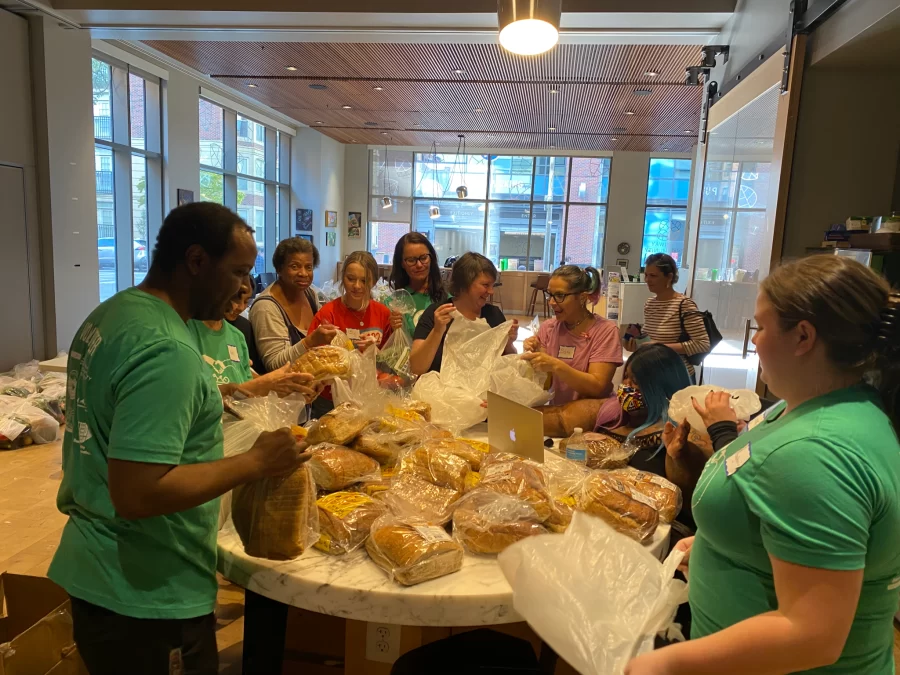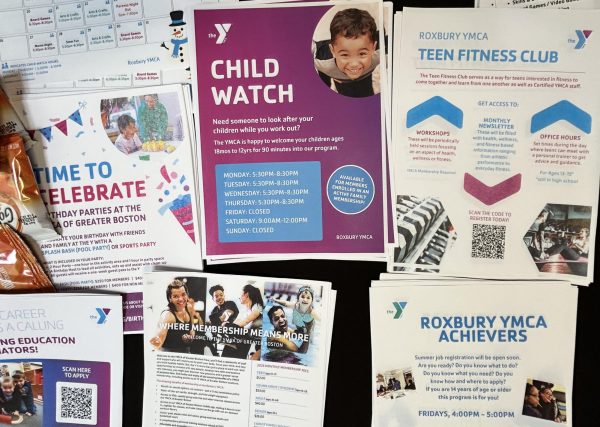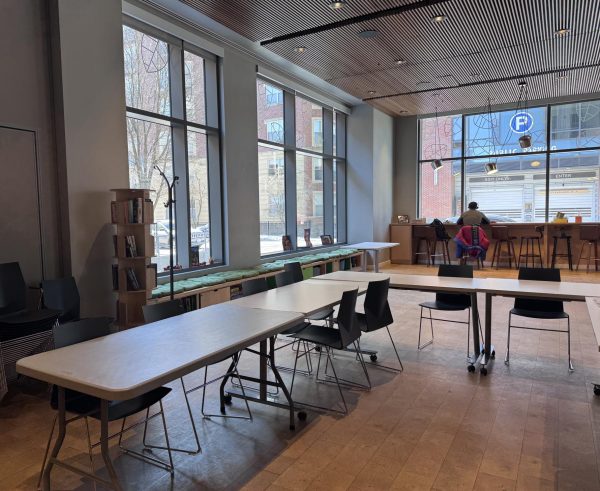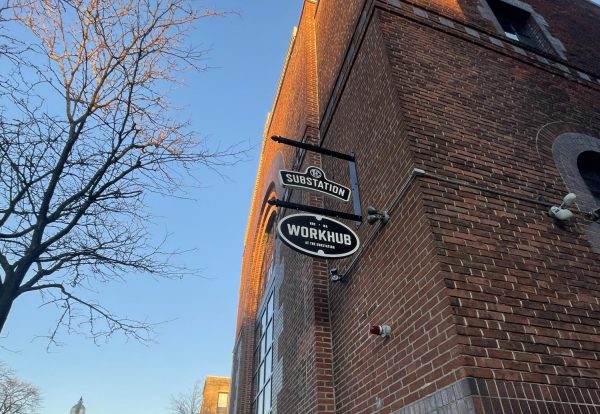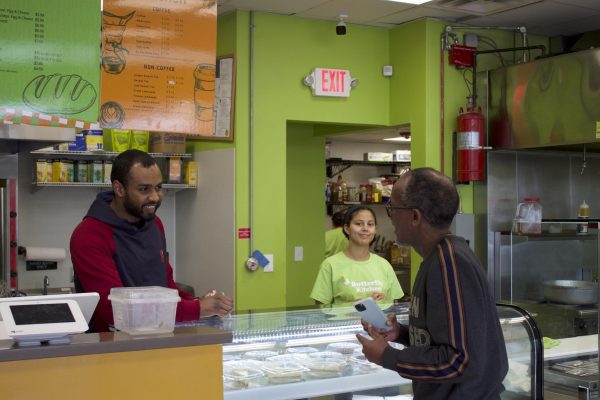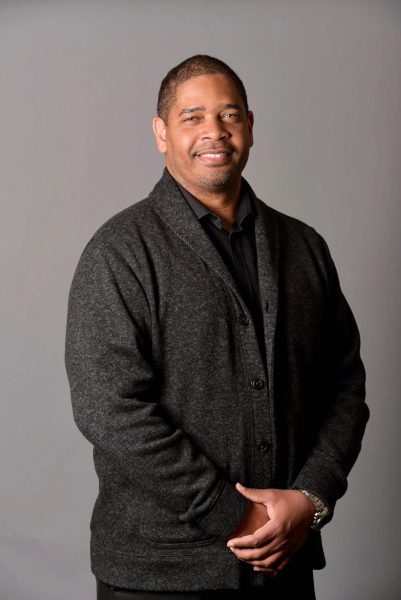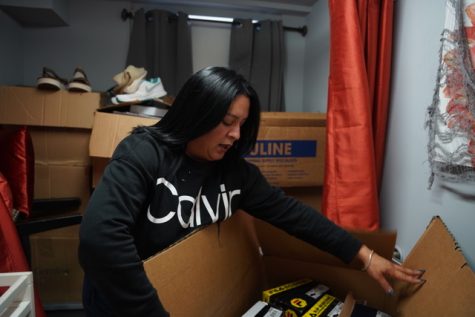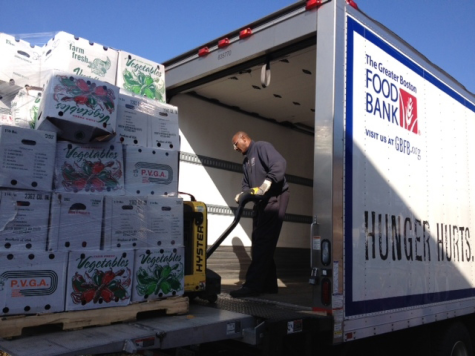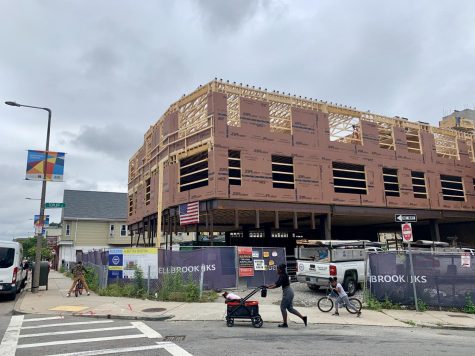At Fenway Community Center, Laura Jean Miller and others help residents struggling with “hidden” food insecurity
“It’s a weird neighborhood. As far as food insecurity, it’s really hidden. Everybody thinks that everyone who lives in Fenway is rich.”
Photo: Jiayi Hao
Fenway Cares began its response to the COVID-19 pandemic in March 2020 and has distributed more than 10,000 bags of free produce.
At the height of the pandemic, it wasn’t uncommon to see community efforts to support residents grappling with food insecurity, especially those who faced unemployment and other financial struggles. Fenway Community Center was one of the many organizations that stepped up.
Since March 2020, Fenway residents in need have lined up outside Fenway Community Center every two weeks to receive a free bag of fresh produce. These food distribution events are supported by volunteers from across the city and were born out of Fenway Cares, a collaborative agreement between six Fenway-based organizations, with Fenway Community Center as the fiscal agent. The other organizations include Audubon Circle Neighborhood Association, Fenway Alliance, Fenway Civic Association, Fenway Community Development Corporation, and Operation P.E.A.C.E.
Laura Jean Miller, the programs manager at Fenway Community Center, helps coordinate this effort – and many more – to support Fenway residents, and she has no plans of stopping anytime soon. Since March 2020, Fenway Cares has distributed more than 15,000 free bags of produce. Miller says what was born out of the pandemic has become cornerstone, especially as the need for basic necessities continues.
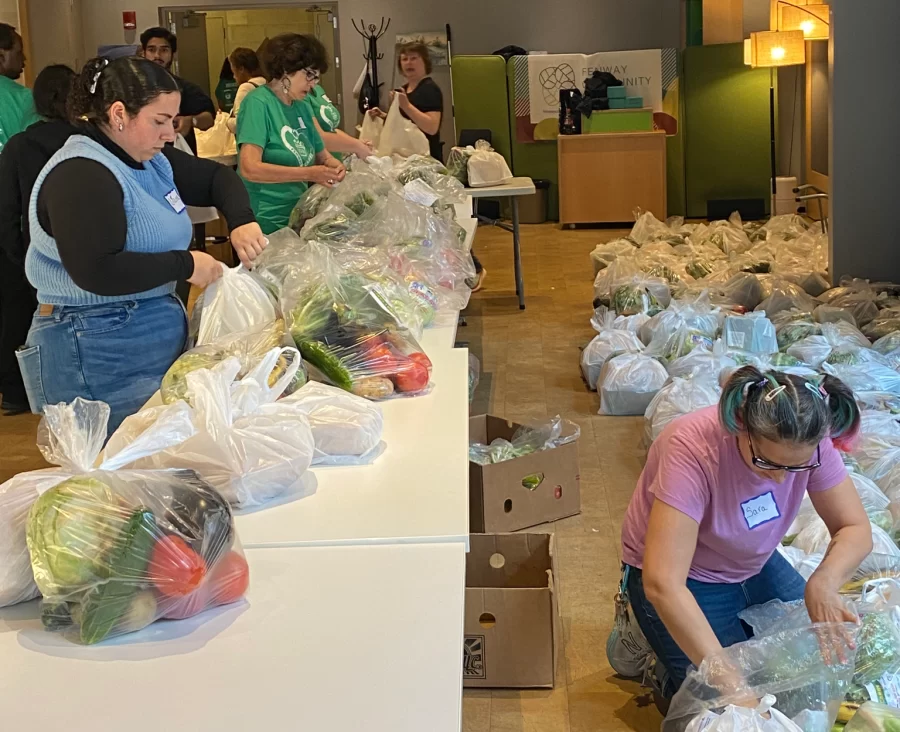
What is unique about Fenway Community Center?
There are lots of community centers in Boston, but generally when you use the term “community center,” they are operated by the city. We are a little different. We’re totally private, nonprofit. When the building went up, it was part of [The Abbey Group’s] arrangement with the city that they would provide a community space. A small group of residents in the area got together and said, “We want to have this place called Fenway Community Center that would just be totally private and [you’d] be able to do what [you] want to do without any interference from corporations or anything like that.” We’re unique in that we were created by residents; we’re here for the residents.
What do a lot of people often not realize about the Fenway neighborhood?
It’s a weird neighborhood. As far as food insecurity, it’s really hidden. Everybody thinks that everyone who lives in Fenway is rich and they are either students or have recently graduated. There’s an assumption that there are no kids, there are no seniors. The truth is, we do have those populations. Now, we have fewer than in the other neighborhoods. But the kids that we have here and the seniors that we have here are more likely to be living in poverty than folks in most of the other neighborhoods in Boston. So, we have these little hidden pockets of people who really need services. Whereas…when city councilors or so forth, when they’re looking at where [to] put these services, they’re not looking at Fenway because when they’re looking at averages, they’re seeing people who can afford to help others, not people who need help. So, when there are programs like this…not only is it that you’re giving people food, it’s also that you’re recognising these people exist.
How do your food insecurity services work?
At first, it wasn’t really clear exactly what form Fenway Cares was going to take on. The form it ended up taking is food distributions. Fenway Cares [applies] for grants and then with the grant money they purchase bags from Fair Foods — a separate nonprofit that works with grocery stores and businesses and they take donations of food that would otherwise be thrown away. They take all the food, they take it to their warehouse, they package it up and then the truck brings it here. We do two locations, [at Fenway Community Center] and over at Symphony Park. We do have people who line up to take their bags home — I believe, it’s about 45 — but then we also handle all the folks who have registered online to have deliveries brought to them, which is usually about 60 people. So, it’s a little over 100 now, total.
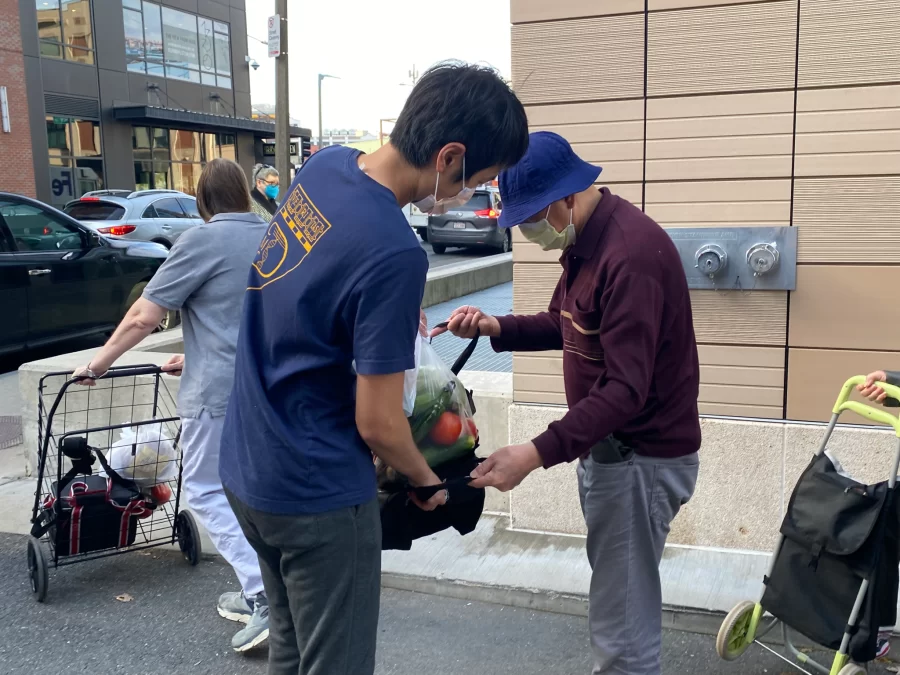
Do you have enough food for everyone?
People will start lining up at 3:00 p.m. We start handing food out at 3:30 p.m. Usually, everyone who was waiting, we are always able to give all of them one [bag.] We haven’t ever run out at that point. But then people will filter in. By 4:30 p.m. or so, we are having to tell people, you know, “We’re sorry, we ran out.” We have expanded more and more. We’ve gradually added more and more bags of food, and we still run out every week. The need just seems to keep growing. Food is just so expensive, right now.
Have you noticed any demographic patterns in the people who ask for food?
When we started, it was almost all seniors. We have a lot of folks from Russia and Ukraine, and we currently do not have any volunteers that speak Russian or Ukrainian, so we just do the best we can. Luckily, most folks come in groups and so there will be one person who can speak, at least, enough English to get by, and so that helps a lot. There are some families that come every time, there are some young working people who are starting to come more and more. It’s becoming more and more just a wider variety.
Food insecurity is a continuing issue. What keeps you and the other volunteers going?
In the beginning, we didn’t necessarily know whether people needed food or not. But, I think there was a desire to do something to help people almost more on a psychological level. People needed to know that somebody was concerned about them, that somebody was trying to help them. Once we saw how great the need [was]…I don’t think anyone wants to stop doing it now because we know that folks really need a little bit of help, and we know that people make the most of it.

